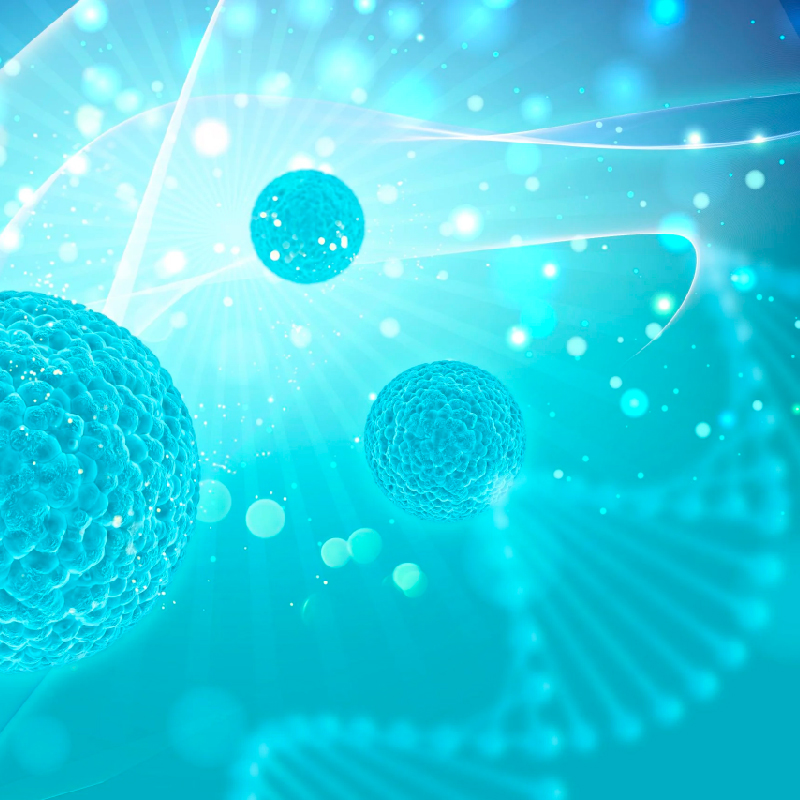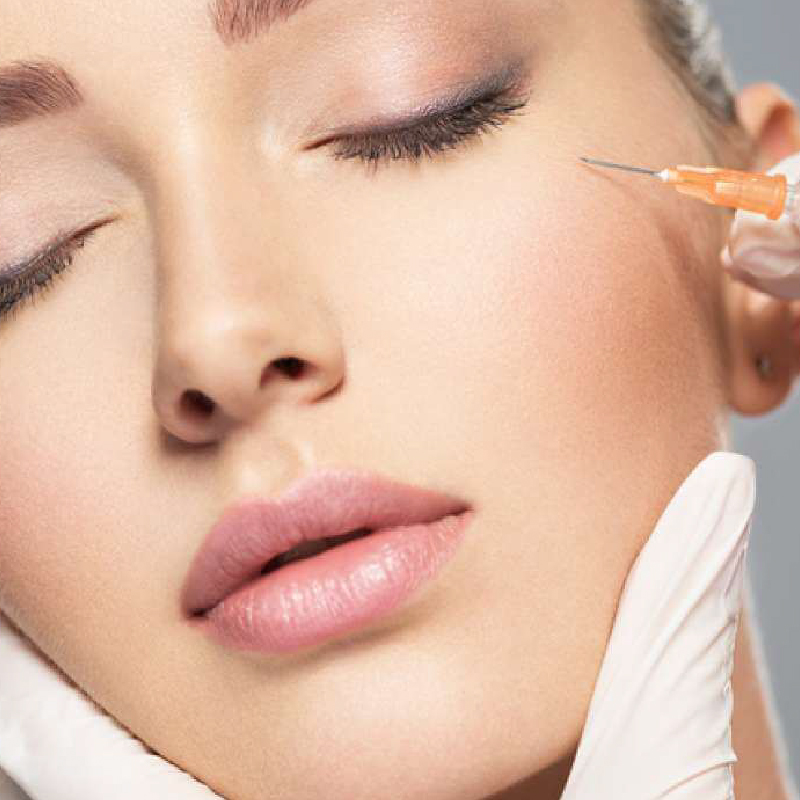The difference is these are not watered down products. Unlike other stem cell banks, Cryo-preservatives and saline solutions are never added. Our products are «pure» and are vigorously tested to mantain the highest level of quallity and purity on the market.

Stem cells and stem cell therapy work by paracrine signaling (local cell-to-cell communication to induce changes in nearby cells) to create the appropriate healing environment to restore tissue. The exosomes are those paracrine signals that can be delivered immediately. As the technology and discovery of new methods of treating patients has evolved, the science shows that the optimal way to provide true “stem cell therapy” is to directly provide the signals as its own therapy and avoid potential issues with delivering and keeping transplanted cells alive.
Stem cells by nature work to heal, repair, and restore the body. Exosomes, found in healthy tissue, have shown 1000+ Growth Factor Proteins to help modulate the inflammatory healing process. This is accomplished by activating and recruiting the patients’ own cells to the area, revascularizing the area and reducing the inflammatory response to allow natural healing

Is extracted and processed to yield a high concentration of:
Mesenchymal Stem Cells (MSC’s), Cytokines, Growth Factors, Hyaluronic Acid, Specialized cells for signaling, Scaffolding cells necessary to reconstruct, repair, replace, or supplement damaged/injured tissue.
Wharton’s Jelly tissue allograft strictly adhere’s to the FDA’s Regulatory Criteria and section 361 of the PHS Act for Minimal Manipulation, 21 CFR 1271.10(a)(1) and Homologous Use, 21 CFR 1271.10(a)(2).

25 and 50 billion Exosomes.
Exosomes are not cells but are micro-vesicles, which are about 1/1,000th the size of a cell and contain no nucleus or DNA. They can be regarded as the purest form of cellular therapy available because their function is to direct tissue and wound healing by activating the patient’s own regenerative cell response.

Ground Breaking, All Natural, Anti-Aging Rejuvenating Blend
This revolutionary powder supplement targets free radicals to help reverse and prevent cell oxidation.
Custom blend of amino acids, antioxidants, and herbs is clinically tested and ethically produced at a premium laboratory in Atlanta. It’s like the fountain of youth in a bottle.

¡Coming soon!
To “exceed” industry standards for testing. All of our products are sent for sterility, endotoxin, and environmental testing by a third-party laboratory that is a global leader in pharmaceutical, cosmetic, and environmental testing arena.
Using Proprietary Patented Processing techniques and following minimally manipulative procedures, the process does not alter the regenerative properties of the placental tissue. Products maintain the integrity of the original source material and the relevant characteristics relating to its utility for soft tissue supplementation that is required for tissue repair.
Regenerative Medicine is one of the most exciting and promising avenues of treatment today.
Our mission is to provide doctors regenerative medicine fundamentals, so they can treat their patients with these ground-breaking therapies.
We offer “ON SITE TRAINING”, to all our new clients from opening your Regenerative Medicine Company to one on one training of all staff involved. We want to help guarantee your success, so your patients receive optimal results!
ABSTRACT
The umbilical cord has become an increasingly used source of mesenchymal stromal cells for preclinical and, more recently, clinical studies. Despite the increased activity, several aspects of this cell population have been under-appreciated. Key issues are that consensus on the anatomical structures within the cord is lacking, and potentially different populations are identified as arising from a single source. To help address these points, we propose a histologically based nomenclature for cord structures and provide an analysis of their developmental origins and composition. Methods of cell isolation from Wharton’s jelly are discussed and the immunophenotypic and clonal characteristics of the cells are evaluated. The perivascular origin of the cells is also addressed. Finally, clinical trials with umbilical cord cells are briefly reviewed. Interpreting the outcomes of the many clinical studies that have been undertaken with mesenchymal stromal cells from different tissue sources has been challenging, for many reasons. It is, therefore, particularly important that as umbilical cord cells are increasingly deployed therapeutically, we strive to better understand the derivation and functional characteristics of the cells from this important tissue source.
STEM CELLS TRANSLATIONAL MEDICINE 2017;6:1620–1630
SIGNIFICANCE STATEMENT
The connective tissue of the human umbilical cord, Wharton’s jelly, is garnering increasing attention as a source of mesenchymal stromal cells
CONCLUDING REMARKS
Wharton’s jelly is among the simplest of human connective tissues, and provides an apparently more homogeneous harvested cell population than other mesenchymal tissue sources.
Click on the link below to view this article: https://www.ncbi.nlm.nih.gov/pmc/articles/PMC5689772/pdf/SCT3-6-1620.pdf
Abstract
Once cartilage is damaged, it has limited potential for self-repair. Autologous chondrocyte implantation is an effective treatment, but patients may suffer during cartilage harvesting and the donor-site morbidity may accelerate joint degeneration. Using autologous mesenchymal stem cells (MSCs) derived chondrocytes is another selection, while it also causes some injuring. The umbilical cord, an ecto-embryo tissue may be an ideal source of cells, because of its accessibility, abundant resources, painless procedures for harvesting, and lack of ethical issues. We isolated MSCs from Wharton’s jelly of human umbilical cord (WMSCs), which expressed CD44, CD105 and CD271 but not CD34 and CD45 with flow cytometry analysis. RT-PCR showed not only positive expression of CD90, c-kit, Sca1, SH2 and SH3 but also positive expression of the chondrocyte markers Sox-9 and Col-2A1. WMSCs cultured in high-density in the presence of transforming growth factor b1 and dexamethasone showed cartilage extracellular matrix-secretion and integrated into a thin piece of cell-based membrane. The cell-based thin membrane cultured in rotary cell culture system formed a round, opaque, glistening non-scaffold cartilage-like tissue, larger and condenser than what was formed with conventional pellet culture. Glycosaminoglycan and type II collagen content significantly increased after 3-week culture. The human WMSCs express characteristics of pre-chondrocytes, low immunogenicity and are easy to be obtained with higher purity cells in Wharton’s jelly, so it may be a new seed cells more suitable for constructing tissue-engineered cartilage.
Click on the link below to view this article: https://www.sciencedirect.com/science/article/abs/pii/S1389172313002636
Abstract
Osteoarthritis is pandemic across the globe, with an estimated 30.8 million adults in the United States and 300 million individuals worldwide suffering with spine and/or joint pain and disability associated with osteoarthritis. Osteoarthritis is the most common form of degenerative disc and joint disease resulting in pathological pain, damage, and progressive breakdown of intra-articular joints between skeletal bones.
Conclusion: Wharton’s Jelly is a specialized umbilical cord tissue whose primary function in the donor is to physically support and serve as a barrier or conduit, or connect, cover, and/or cushion. A compliant FDA registered 361 HCT/P harvested from Wharton’s Jelly is homologously utilized when injected into a qualified recipient’s intra-articular disc and/or joint(s) for the intended repair, reconstruction, replacement, and/or supplementation of the recipient’s damaged native cushion, protection, and structural support. These two safe and effective regenerative medicine procedures comprehensively qualify for regulation solely under section 361 of the PHS Act and 21 CFR part 1271 by fulfilling all four criteria in the 21 CFR 1271.10(a) checklist for exemption from the FDA’s high risk regulation and premarket approval requirements.
Abstract
The most recent studies indicate that exosomes can promote proliferation and migration of dermal fibroblasts and keratinocytes and enhance the angiogenesis process, leading to a strong regenerative effect on the skin injuries, both in normal and diabetic organisms. The replacement of stem cells with exosomes in the regenerative therapy has some advantages, such as the potential for drug and gene delivery, storage constancy, and stability in the body [87]. Moreover, a perpetual stem cell source can be obtained by immortalization and the nanovesicles isolation protocol can be standardized so that an “off the shelf” medicine would be available for chronic wounds treatment, as well as burns, which require immediate intervention. All these advantages bring light to the use of MSCs-derived exosomes as a new and effective approach in wound healing therapy without the confines that cellular therapy brings.
Click on the link below to view this article: https://www.juvexo.com/storage/app/media/_cstmfldrPDF/Exosomes-in-Chronic-Wound-Healing-Nov-2018.pdf
Abstract
The prognosis for extensive and deep skin injury is not satisfactory because of scar formation and the loss of normal function and skin appendages. Several novel therapies for skin repair and regeneration have emerged. Currently, stem cell–based therapies are attractive candidates in regenerative medicine to treat skin injuries. Human umbilical cord Wharton’s jelly–derived mesenchymal stem cells (hUC-MSCs) have become a unique, accessible, and noncontroversial source of regeneration in medicine. The aim of this study was to explore a new strategy for treating skin wounds. A mixture of hUC-MSCs, Wharton’s jelly, and skin microparticles were transplanted to 10-mm diameter, full-thickness, middorsal, excisional skin wounds of mice. After 7 days, the tissue sections were sampled for reconstruction analysis and histological examination. After transplantation, there was a remarkable development of newborn skin and its appendages. We could see newly generated layers of epidermis, sebaceous glands, hair follicle, and sweat glands clearly. This innovative strategy could be very promising and may significantly increase the quality of repair and regeneration of skin in injuries.
Click on the link below to view this article:
Abstract
Exosomes, a group of vesicles originating from the multivesicular bodies (MVBs), are released into the extracellular space when MVBs fuse with the plasma membrane. Numerous studies indicate that exosomes play important roles in cell-to-cell communication, and exosomes from specific cell types and conditions display multiple functions such as exerting positive effects on regeneration in many tissues. It is widely accepted that the therapeutic potential of stem cells may be mediated largely by the paracrine factors, so harnessing the paracrine effects of stem and progenitor cells without affecting these living, replicating, and potentially pluripotent cell populations is an advantage in terms of safety and complexity. Ascending evidence indicated that exosomes might be the main components of paracrine factors; thus, understanding the role of exosomes in each subtype of stem cells is far-reaching. In this review, we discuss the functions of exosomes from different types of stem cells and emphasize the therapeutic potentials of exosomes, providing an alternative way of developing strategies to cure diseases.
Click on the link below to view this article:
Cure Health Solutions
8 The Green # 16321
Dover, DE 19901